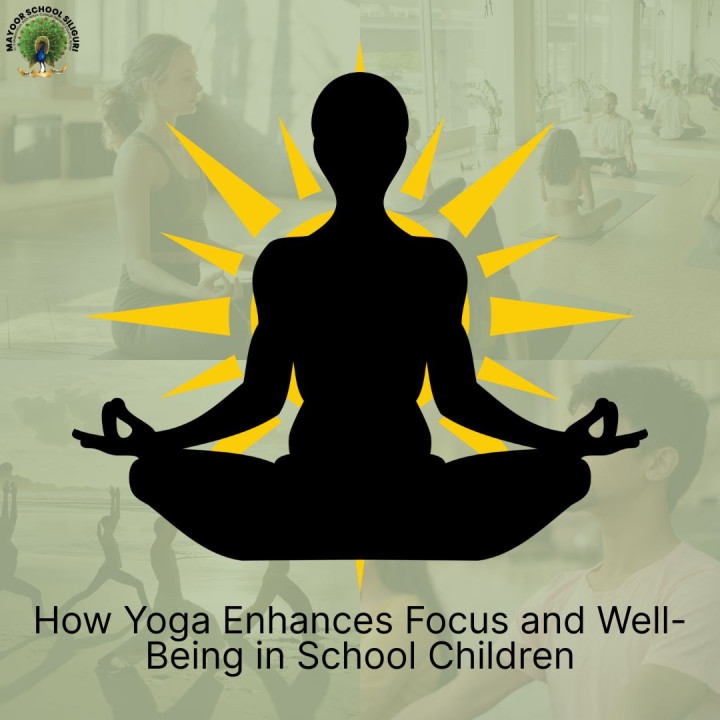
To the uninitiated, yoga may seem like a sequence of contortions or flexible poses. But as the revered sage Patanjali articulated in the Yoga Sutras, "Yogah chitta vritti nirodhah", meaning: Yoga is the stilling of the fluctuations of the mind. This profound stillness is the very key to unlocking enhanced concentration and emotional balance in school children. In the hustle of modern education, standardized tests, academic pressures, screen-induced distractions, children today are growing up in a vortex of stimulation. Amidst this chaos, an age-old practice, yoga, has been a silent sanctuary for focus, resilience, and well-being. Once confined to ashrams and spiritual retreats, yoga is now finding a well-deserved place in the classroom. But how exactly does yoga shape young minds? What does science say? And what wisdom can we glean from ancient Indian traditions? Numerous studies underscore the benefits of yoga on children's cognitive development. A landmark study published in the journal Mindfulness (2016) showed that children who practiced yoga and mindfulness for just 10 weeks displayed significant improvements in attention, executive function, and working memory. Dr. Sat Bir Singh Khalsa, a leading researcher in yoga and mental health at Harvard Medical School, states: "Yoga practices can enhance children’s self-regulation, improve classroom behavior, and support academic performance." Asanas (physical postures) combined with pranayama (breathing techniques) stimulate the parasympathetic nervous system, bringing calm to the brain’s amygdala and helping children shift from a reactive to a reflective state. The mental health crisis among youth is real. According to the World Health Organization, 1 in 7 children aged 10-19 experiences a mental disorder. Yoga offers an empowering, non-pharmacological path to emotional well-being. Incorporating yoga in schools fosters: Reduced anxiety and depression Improved emotional regulation Greater self-awareness and empathy Indian philosopher Swami Sivananda beautifully encapsulated this when he said: "Meditation is the eye of the soul, and yoga opens it." Through consistent practice, children learn to breathe through their emotions, quite literally. Controlled breathing practices like Nadi Shodhana (alternate nostril breathing) or Bhramari (humming bee breath) have been proven to calm the nervous system and reduce cortisol levels. Teachers often report noticeable changes in students who engage in regular yoga. These include: Decreased disruptive behaviors Increased patience and cooperation Enhanced sense of responsibility This aligns with the yogic concept of Ahimsa (non-violence), one of the foundational Yamas (ethical precepts) from Patanjali’s eight limbs of yoga. By cultivating compassion towards oneself and others, children become more harmonious members of the classroom community. In ancient Indian gurukuls, yoga was not an extracurricular activity, it was integral to education. It was believed that a calm, centered child could grasp knowledge more effectively and apply it wisely. The great sage Sri Aurobindo once wrote: “The first principle of true teaching is that nothing can be taught. The teacher is not an instructor or taskmaster, but a helper and a guide.” Yoga nurtures this inward journey,empowering children not just to learn, but to become learners for life. Success Stories from Indian Schools Teachers at Mayoor School have observed remarkable benefits: Sharper attentiveness in classrooms More positive and respectful peer interactions Fewer absences and noticeably stronger immunity among students As one student beautifully put it: Introducing yoga into a child’s life doesn’t require hour-long routines. Just 15–20 minutes a day of movement, breathwork, and stillness can be transformative. Here’s a simple, child-friendly sequence for schools: 3 rounds of Surya Namaskar (to awaken energy) 5 minutes of Nadi Shodhana (to center attention) 5 minutes of guided meditation or silence (to cultivate stillness) If we truly want to nurture not only smart minds but wise, kind, and centered souls, then yoga must move from being a weekly enrichment activity to becoming a core part of the educational infrastructure. After all, as Sri Krishnamacharya. the father of modern yoga, declared: “Yoga is an invaluable gift of India’s ancient tradition. It is not about exercise but about discovering the sense of oneness with yourself, the world, and nature.” Isn’t that precisely what our children need? In an age where the world spins faster than ever, yoga offers children the still point at the center of the turning world, a place of quiet strength and clear focus. Whether in a school in Mumbai or Manhattan, the yoga mat becomes a sacred space, a launchpad for both academic excellence and inner wisdom.Cognitive Focus: The Science Speaks
Emotional Resilience and Mental Health
Behavioral Benefits in the Classroom
Yoga Builds the Inner Architecture of Character
India has witnessed a renaissance in yoga-based education, and Mayoor School in Siliguri is a shining example. By incorporating yoga into the students’ daily routine, the school fosters not just academic excellence but holistic well-being. Each morning begins with Surya Namaskar (Sun Salutations) and simple kriyas that help set a calm and focused tone for the day.
"When I do yoga in the morning, my mind becomes like a still lake. Everything becomes clearer."A Daily Practice for Lifelong Impact
The Way Forward: Yoga as Educational Infrastructure